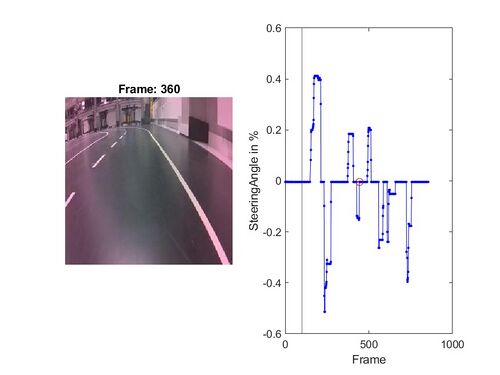Lane Keeping with AI

| Autor: | Moye Nyuysoni Glein Perry |
| Art: | Project Work |
| Starttermin: | 14.11.2024 |
| Abgabetermin: | 31.03.2025 |
| Betreuer: | Prof. Dr.-Ing. Schneider |
Introduction
This project focuses on developing an autonomous lane-keeping system for a 1:20 scale model car equipped with a camera. The system’s goal is to train an artificial intelligence (AI) Model to drive autonomously on the track using image processing and signal processing techniques. In this work, steering angle data and video recordings are employed to train an artificial intelligence (AI) model. Two main approaches are explored:
- Training a Convolutional Neural Network (CNN) from scratch
- Using Transfer Learning (with ResNet-50 and integrated PID/MPC control)
These methods are compared using a morphological (Zwicky) box framework that considers various design parameters. Signal processing plays a key role in preprocessing the visual data and augmenting the training dataset.
Lane-keeping refers to the ability of a vehicle to detect and maintain its position within a designated lane on the road. It is a critical function for autonomous driving, helping to enhance road safety and reduce driver workload. Our target location is the mechatronics lab at HSHl. below are videos recorded using videos from a JetRacer
Visualized Data of Sample01
Visualized Data of Sample02
System Requirements
The lane-keeping system must fulfill the following requirements:
Autonomous Operation: Detect lane markings and maintain the vehicle in the right lane.
Real-Time Processing: Process video data in real time to generate accurate steering commands.
Data Synchronization: Synchronize steering angle measurements with video frames.
Robustness: Handle varying lighting conditions, noise, and occlusions using signal processing techniques.
Scalability & Adaptability: Provide flexibility to incorporate different AI training strategies (from-scratch CNN vs. transfer learning).
Visualization & Analysis: Use MATLAB® scripts (e.g., zeigeMessdaten.m) to visualize and verify data and performance.
Documentation & Reproducibility: Maintain thorough scientific documentation including code, parameters, and evaluation criteria.
Task
- Set up requirements for a lane keeping system.
- Research on solutions for the task (morphological box with technical creteria).
- Implementation in MATLAB®. Teach a AI to drive in the right lane.
- Use the Video data here.
- Use the recorded steering angle here.
- The data can be visualized with zeigeMessdaten.m (see fig. 1).
- Verify the results with Rundkurs01.avi and Rundkurs02.avi.
- Evaluation of the solutions using a morphological box (Zwicky box) based on technical creteria
- Discussion of the results
- Testing of the system requirements - proof of functionality
- Scientific documentation of every step as a wiki article with an animated gif
→ zurück zum Hauptartikel: Signalverarbeitung mit MATLAB und Künstlicher_Intelligenz